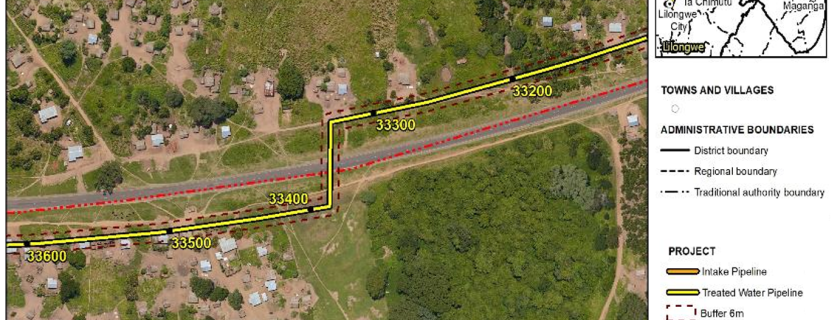A reliable water supply is a vital service for a prosperous development and for a healthy living and civilization. In some areas of Malawi, a good water supply is still an issue to be solved and it has been getting worse. Periods of shortage have been happening more often and for longer and the quality of the accessible water is often unreliable.
In the face of these facts, the Lilongwe Water Board has decided to improve the water supply to the capital, Lilongwe City, which is currently supplied directly from two old dams (constructed in 1989 and 1966) in the Lilongwe river. The proposed new water supply shall benefit the capital city and also the areas and town centres along the M14 Lilongwe – Salima Road.
The project – one of the biggest of its type ever made in Africa – includes: abstraction of water from lake Malawi through a 2km long pipeline till a water treatment plant, and transportation of treated water from there to Lilongwe City through a 110 km conveyance pipeline.
Some impressive numbers about the project:
- 112 km of water pipelines from lake Malawi to the capital city, Lilongwe;
- 4 pumping stations;
- 4 clear water tanks and related infrastructure;
- The construction of the whole system will last for 24 months, comprising 5 working fronts simultaneously;
- The construction will involve the presence of an average of 474 workers, with a peak of 716 workers.
Nemus’ consultancy services were requested for the development of an environmental and social impact assessment (ESIA), covering all the affected area, people, assets and natural resources.
The baseline studies covered the following subjects: geology, topography, hydrogeology, soils, climate and meteorology, air quality, surface water quality, ecology, flora, fauna, socio-economics and public health.
The consultancy services also involved the making of a resettlement action plan (RAP), because preliminary calculations indicated a provisional 1.700 project affected persons (PAP) and 1.059 project affected assets.
To ensure the proper involvement and hearing of all interested parties, stakeholders and general population, public participation and consultations were organized: 2 rounds of 3 public consultation meetings: one in each of the three affected Districts.

